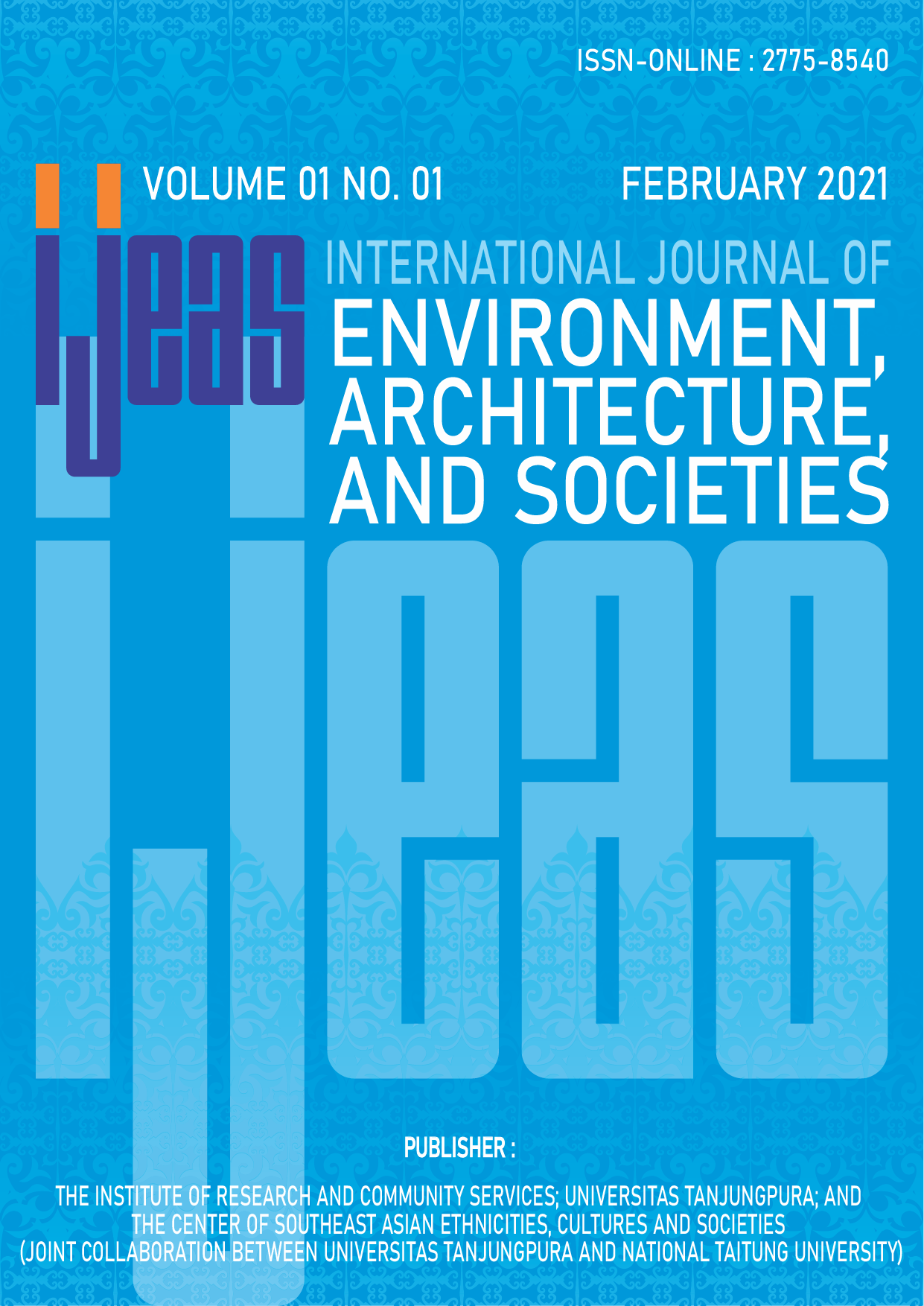Participatory Design for Accessible Evacuation Centre for Flood Victims in Kelantan
DOI:
https://doi.org/10.26418/ijeas.2021.1.01.46-53Keywords:
accessible, disaster, evacuation centre, flood victimsAbstract
Malaysia has been experienced with many natural disasters such as flood, landslide, earthquake and drought, which resulted in damaging the properties and causing casualties especially during the biggest flooding affected over 36,128 families was in 2014 at East Coast of Malaysia mainly in Kelantan. Public buildings such as schools, religious buildings, including mosques or community halls, have been used as evacuation centres in Malaysia every year. Many studies identified many evacuees were facing many problems, particularly in terms of physical facilities, such as providing improper assistance in terms of facilities, privacy, and many others. This paper objectives are firstly, to review the requirements of the physical facilities for evacuation centre, secondly to assess the components of the physical facilities for evacuation centre and finally to propose the criteria of physical facilities for evacuation centre. A qualitative approach was adopted, and data were collected through observation, interview and secondary data through literature analysis. Three case studies in Kelantan were chosen based on three categories which are small capacity (Veteriner office, Kuala Krai), medium-capacity (Sekolah Menengah Kebangsaan Keroh, Kuala Krai) and big capacity (Sekolah Menengah Kebangsaan Agama Lati, Pasir Mas). The data were analysed to assess the physical facilities provided in the evacuation centre to facilitate the flood victims. The benefit of this research is to give awareness to flood victim for future disaster through technology, management, physical and mental. Thus, evacuation centre is important to create comfortable, privacy and rehabilitated environment to serve the flood victims physically and mentally.
Downloads
References
Abdul Rahim, A., & W Seman, W. M. A. (2019). Concept of Privacy from Islamic Perspective in Flood Evacuation Centre. Planning Malaysia, 17(10), 259 –266. https://doi.org/10.21837/pm.v17i10.646
Abdul Rahim, A., Ismawi, Z., Mohd Ramzi, M. H., Izawati, T., & Zulkhairi, C. A. (2015). User Perception of Mobile Homes for Shelter Relief Centre as A Respond for Flood Disaster Preparedness. Kementerian Pengajian Tinggi.
Azlee, A. (2015). Worst Flood in Kelantan, Confirms National Security Council (NSC). Malaymail. https://www.malaymail.com/s/813959/worstfloods-in-kelantan-confirms-nsc
Billa, L., Shattri, M., Rodzi Mahmud, A., & Halim Ghazali, A. (2006). Comprehensive Planning and the Role of SDSS in Flood Disaster Management in Malaysia. Disaster Prevention and Management: An International Journal, 15(2), 233–240. http://dx.doi.org/10.1108/09653560610659775
Center for Science and Environment (1996). Floods, Flood Plains and Environmental Myths. Concept Publishing Company, New Delhi.
Chan, N. W. (1995). Flood Disaster Management in Malaysia: An Evaluation of the Effectiveness of Government Resettlement Schemes, Disaster Prevention and Management. An International Journal, 4(4), 22 – 29. http://dx.doi.org/10.1108/09653569510093405
Katuk, N., Ku-Mahamud, K. R., Md Norwawi, N., & Deris, S. (2009). Web-based support system for flood response operation in Malaysia. Disaster Prevention and Management: An International Journal, 18(3), 327-337. http://dx.doi.org/10.1108/09653560910965673
Law of Malaysia. (2008). Persons With Disabilities Act 2008, clause 26 (1).
Said, M. Z, Gapor, S. A., Samian, M. N., & Aziz, A. M. A. (2013). Konflik di Pusat Pemindahan Banjir: Kajian Kes di Daerah Padang Terap, Kedah. Malaysia Journal of Society and Space, 9(1), 61-69.
Sharma, V.K., & Priya, T. (2001). Development Strategies for Flood Prone Areas, Case Study: Patna, India. Disaster Prevention and Management: An International Journal, 10(2), 101 – 110. http://dx.doi.org/10.1108/09653560110388852
Siti Falindah, P., & Nik Nadrul Hisham, N. R. (2015). The Perceived Quality and Satisfaction With Services at Evacuation Centres: The Case of Kemaman Evacuation Centre. South East Asia Journal of Contemporary Business, Economics and Law, 8(2), 21-29.
Somasundaram, T., & Davies, J. B. (2014). Collaboration to Improve Evacuation Centre Operations in Queensland. International Journal of Disaster Resilience in the Built Environment, 5(3), 305-317. https://doi.org/10.1108/IJDRBE-01-2014-0012
The Malaysian Insider. (2014). Over 65000 Evacuated as Floods Worsen. The Malaysian Insider. http://www.themalaysianinsider.com/malaysia/article/over-65000-evacuatedas-floods-worsenbernama
Victoria Department of Human Services (2013). Emergency Relief Handbook: A Planning Guide. Melbourne: Australian Council of Social Service.
Downloads
Published
How to Cite
Issue
Section
License
Copyright (c) 2021 Wan Mohamad Amin Bin W Seman, Asiah Abdul Rahim, Izawati Tukiman

This work is licensed under a Creative Commons Attribution-ShareAlike 4.0 International License.
This is an Open Access journal distributed under the terms of the Creative Commons Attribution-ShareAlike 4.0 International License.




















